Korea Cross-Country Cycling Trip Day 3
- Jinwook Chang
- 2 days ago
- 4 min read
Day 3 took us from Chungju to Sangju, a long ride that ended with us pedaling through the pitch-black countryside of rural Korea, navigating quiet, empty roads until late into the night.
Today, we woke up at around 8 am in the morning to resume our ride in Chungju city, where we left off yesterday. Nevertheless, since Su An Bo is known for the traditional Korean pheasant dish, we wanted to try it out before leaving the town.
In Korea, pheasant dishes (꿩 요리) are a traditional delicacy, especially in mountainous regions where pheasants were once commonly hunted. Pheasant meat is lean, mildly gamey, and considered healthier than other poultry due to its low fat content. One of the most famous preparations is pheasant noodle soup (kkwong-kalguksu), where the meat is simmered to create a light, flavorful broth served with hand-cut noodles. Other popular variations include pheasant dumplings (kkwong-mandu) and pheasant hot pot (kkwong-jeongol), often enjoyed in colder months for their warming qualities. Historically, pheasant was served to honored guests or during special occasions, and today it remains a nostalgic, regional specialty in places like Su An Bo, where visitors can enjoy it after some relaxing time in the hot springs. We tried all the available dishes at the restaurant, and my favorite was the spiced raw pheasant.
We then resumed our rides in the mountainous regions of Korea.
After approximately an hour ride from where we left off, we faced the Ihwaryeong hill—arguably one of the most difficult hills in the trip.
Ihwaryeong Hill is a mountain hill located between Chungju in North Chungcheong Province and Mungyeong in North Gyeongsang Province, South Korea. It sits at an elevation of about 540 meters and is a well-known route on the Korea Cross-Country Cycling Trail, particularly along the Saejae Bicycle Path. Historically, Ihwaryeong was part of the old Mungyeong Saejae trail, a key crossing point between the provinces during the Joseon Dynasty. For cyclists, it’s one of the most challenging climbs on the route, featuring steep gradients and winding roads, but the effort is rewarded with panoramic views of surrounding mountains and valleys. The pass also has a certification center and rest area, making it a symbolic and memorable milestone for riders.
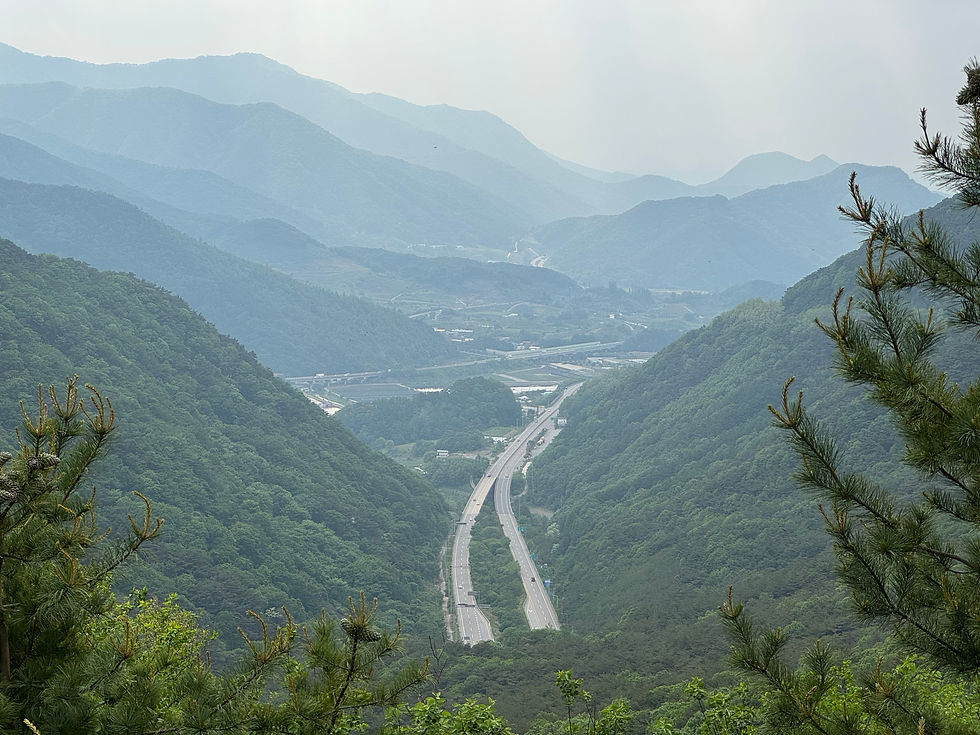
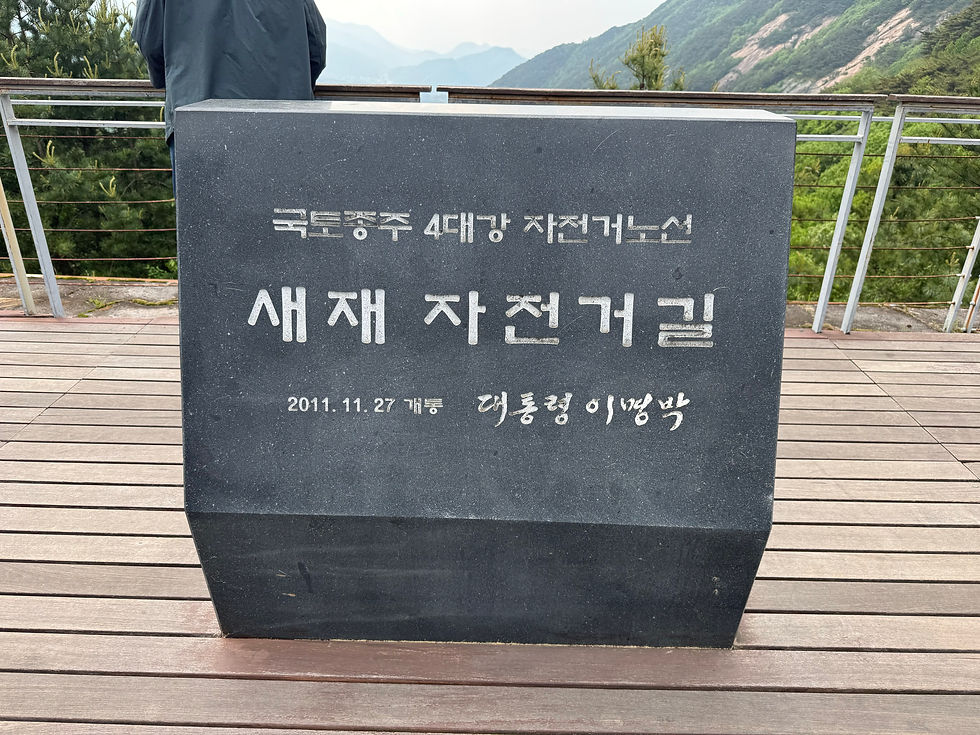
I absolutely loved the downhill that followed. For the next ten minutes, it was nothing but a pure, unbroken descent — both Dingyu and I flying at over 40 km/h. The rush was intoxicating, the wind roaring in our ears, each gust making it feel as if we’d stepped straight into the pages of the bike webtoon Wind Breaker, starring as its main characters in our own high-speed chapter.
As the downhill slope leveled out, we arrived at Mungyeong Saejae.

Mungyeong Saejae is a historic mountain pass in South Korea, located between Mungyeong in North Gyeongsang Province and Chungju in North Chungcheong Province. For centuries, it served as one of the main gateways connecting the southeastern Gyeongsang region to the central provinces. During the Joseon Dynasty, it was a vital route for government officials, merchants, and travelers heading to the capital, Hanyang (now Seoul).
Because of its strategic importance, Mungyeong Saejae was heavily fortified — three large stone gates were built along the pass to control movement and defend against invasions. The area is also famous for its scenic beauty, with well-preserved paths, surrounding mountains, and historical structures that make it both a cultural and natural heritage site today.


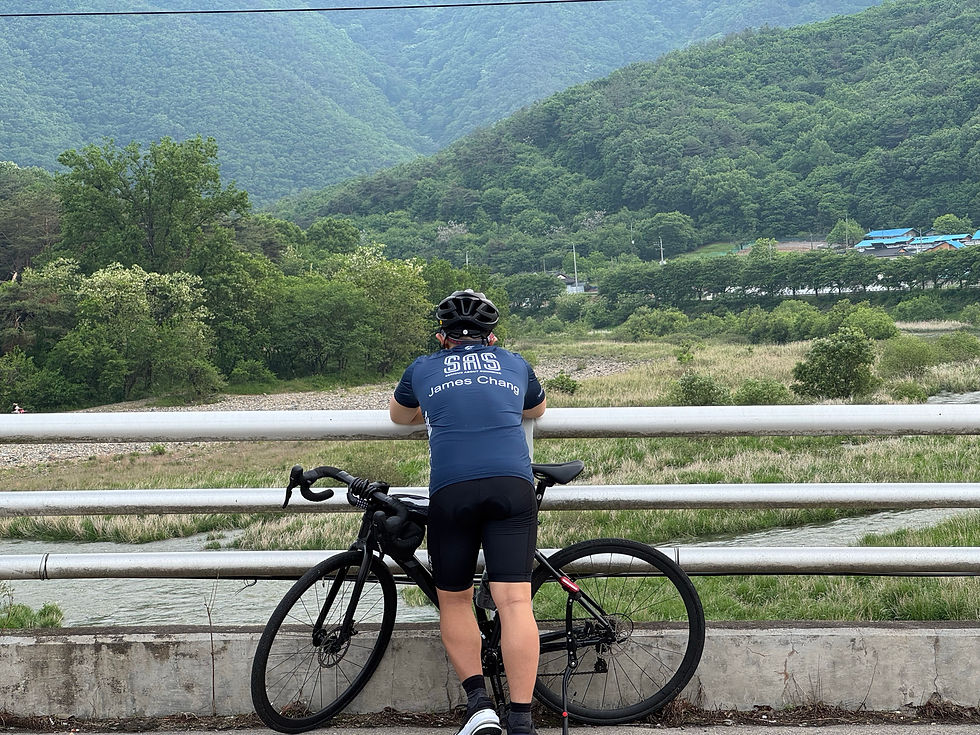
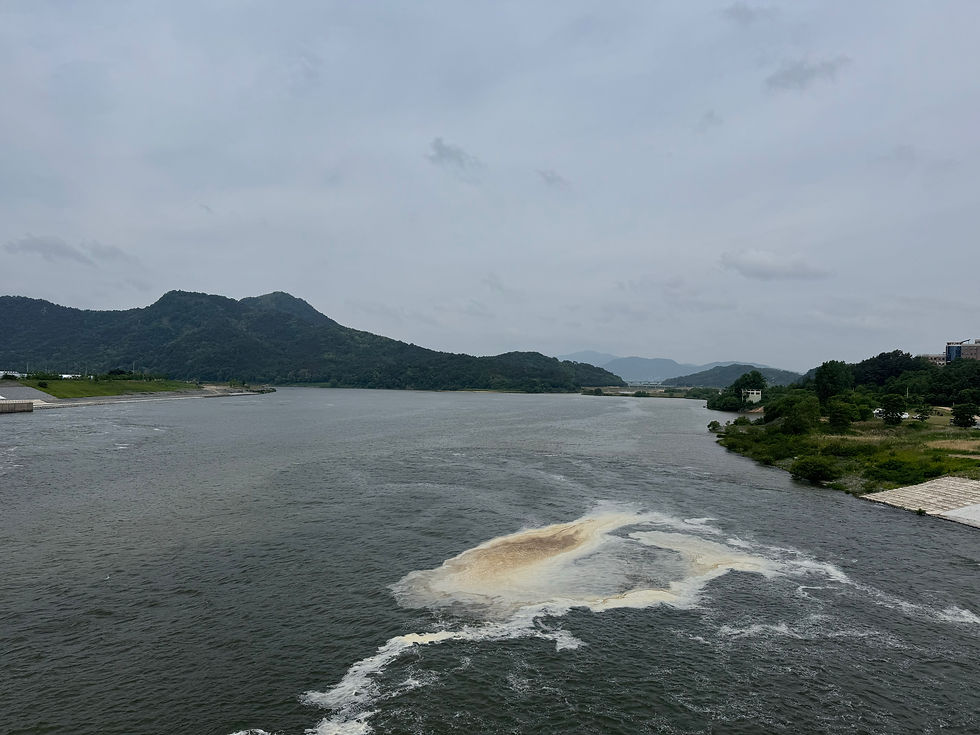
In this scene, the river’s current is flowing steadily downstream until it meets a large submerged rock or obstruction. As the water strikes the rock, it piles up slightly on the upstream side, then rushes around it, creating turbulence and swirling patterns. This collision of current and obstacle forms foamy patches and a stationary ripple or wave — often called a standing wave — that stays in place even as the water continues to move past. It’s a common sight in rivers, especially where the current is strong and the water depth hides the rock beneath the surface.
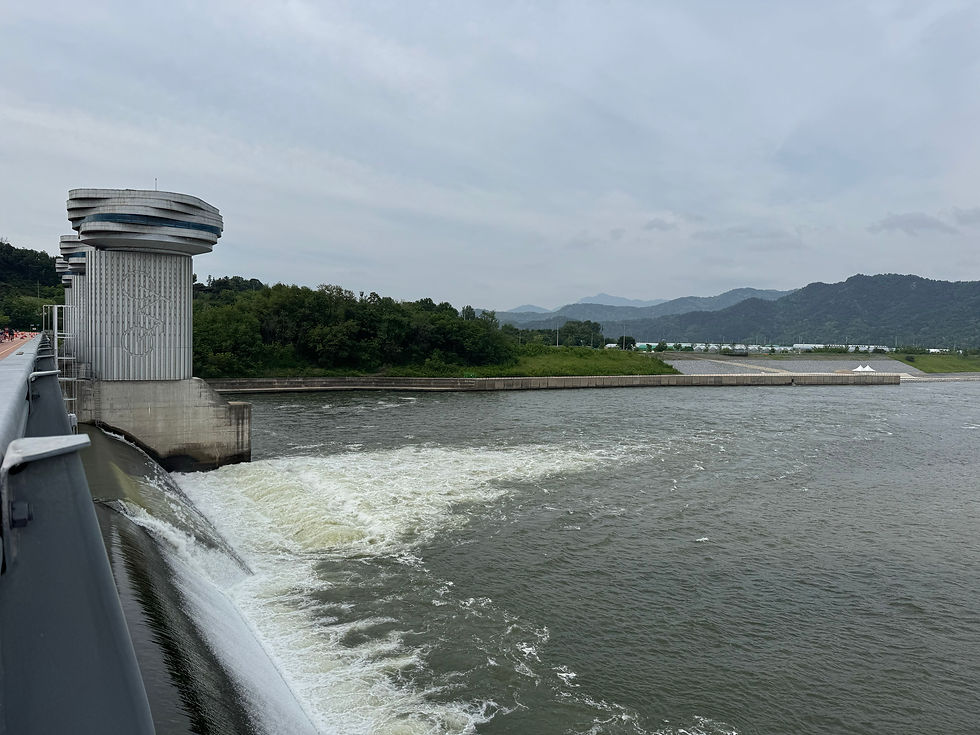

As we entered Mungyeong city, Dingyu's bike had another puncture—the third time already—so we had to stop by a bike repair shop to get it fixed. While the bike was getting fixed, we had a bowl of Jjajangmyeon, a popular Korean-Chinese noodle dish made with thick wheat noodles topped with a rich, savory black bean sauce called chunjang. The sauce is typically stir-fried with diced pork (or sometimes seafood), onions, zucchini, and cabbage, creating a deep, slightly sweet, and umami-packed flavor. Served steaming hot, the glossy black sauce coats every strand of noodle, making it both comforting and satisfying.
After dinner, we headed to our final destination of the day—Sangju Sangpoong Bridge. We had to bike for almost an hour in the middle of nowhere. Since we were in a rural area, the surroundings were all dark, and we could only see around 5 meters ahead of us. Dingyu and I constantly talked while going side by side to not getting frustrated biking in the dark. The 13 km felt like 130 km that day.
Despite being flooded with countless thoughts, we pressed on and eventually reached the guesthouse near Sangju Sangpoong Bridge.
This marks the end of our third day on the Korea Cross-country cycling trip, and I hope you all enjoy it as much as we did. Stay tuned for our next blog!

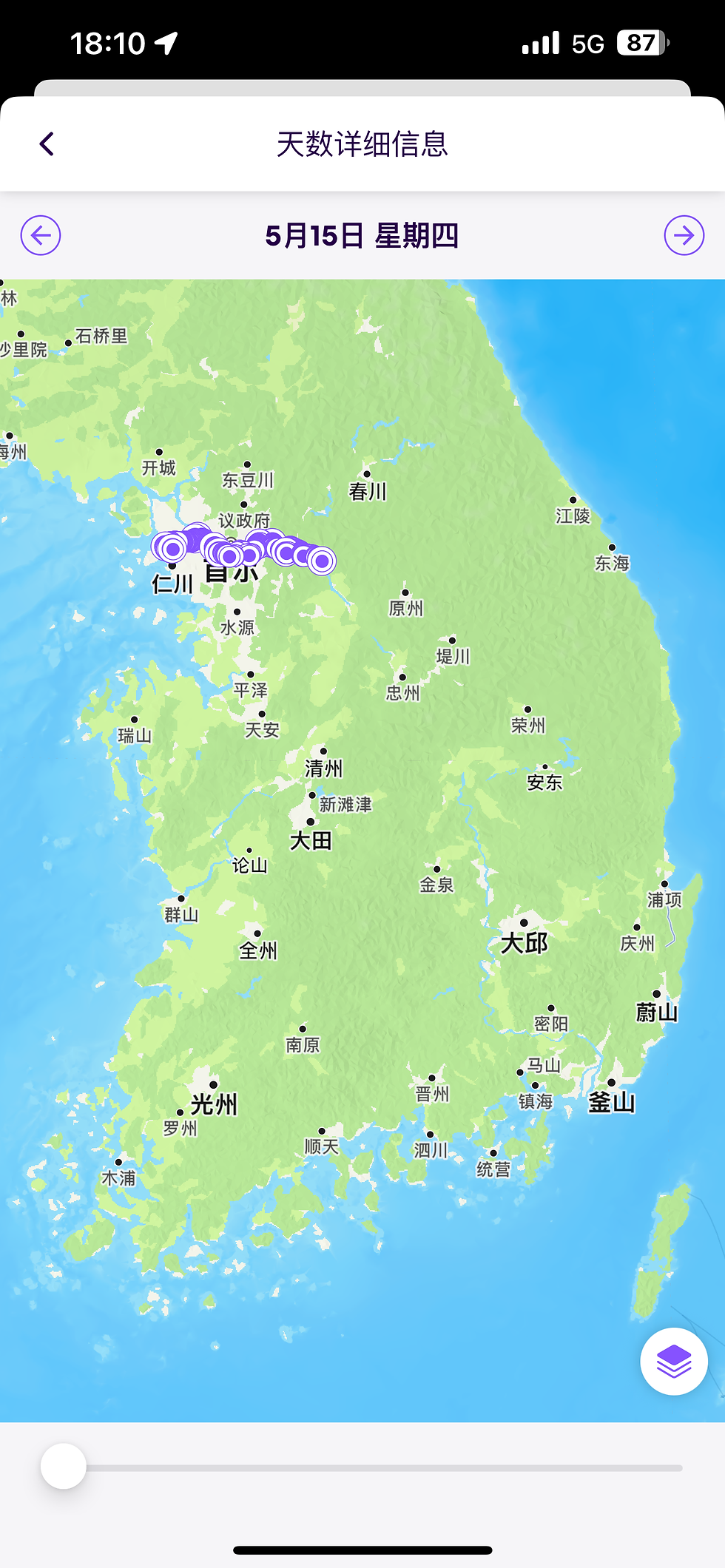

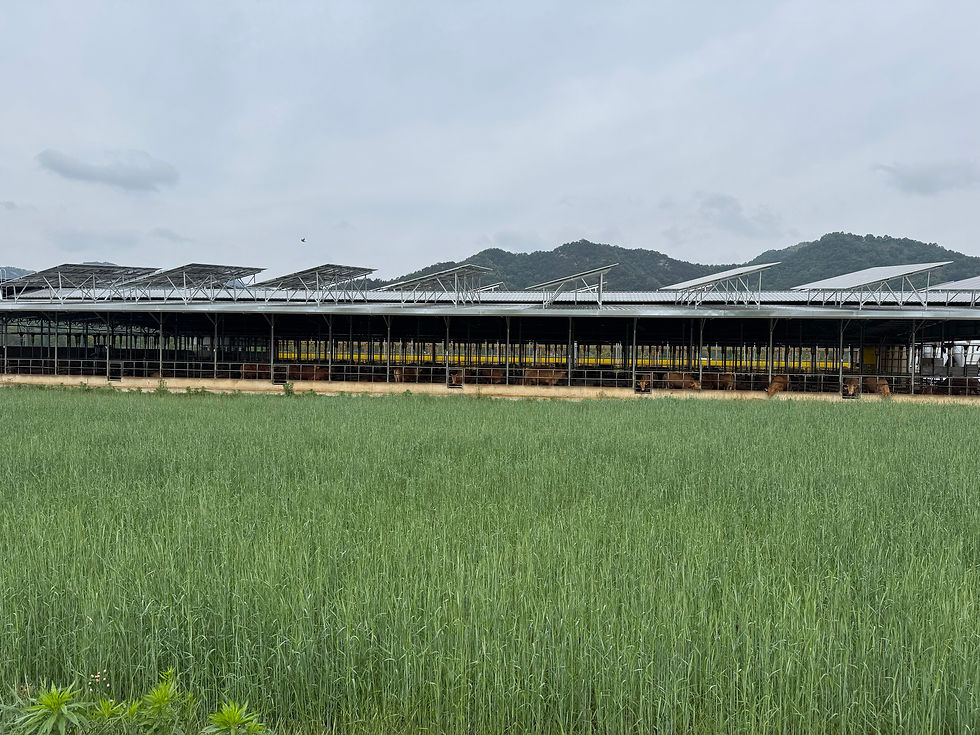
Yorumlar